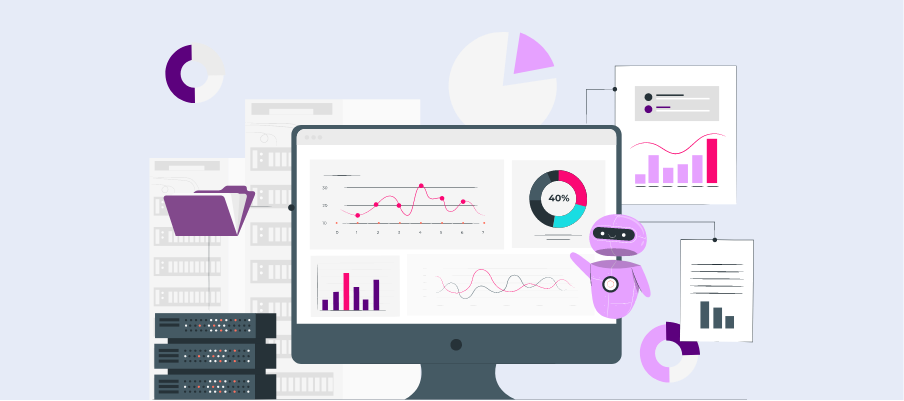Real-Time Data Matching: Automates comparing transactions across multiple systems in seconds.
Automated Reconciliation for Small and Large Enterprises

When done manually, handling financial reconciliation can be frustrating, meticulous, and downright error-prone. Did you know that nearly 80% of businesses experience financial discrepancies due to outdated reconciliation methods? That’s a significant burden on businesses, large and small, limiting their ability to operate efficiently.
Enter automated reconciliation—the game-changing solution that eliminates manual errors saves time and ensures your financials are always accurate. Whether you’re a small business owner or managing the financials of a multinational corporation, automated reconciliation is the key to achieving confidence and control over your accounts.
This article will guide you through the essentials of automated reconciliation, its benefits, and how it solves the common challenges of manual processes. You’ll also learn how to implement it successfully in your business and discover the growing trends that make this technology a must-have for the future.
What is Automated Reconciliation?
Financial reconciliation ensures that your financial records—bank statements, invoices, and transactions—align accurately across different systems. This process becomes increasingly complex as businesses grow, with higher transaction volumes and large datasets complicating the process.
Automated reconciliation uses advanced technologies like machine learning (ML), AI, and rule-based algorithms to streamline this task. The software compares and matches records, detects discrepancies, and even generates reports—all in a fraction of the time it takes humans to do manually.
How It Works
Automated reconciliation pulls data from financial sources such as accounting tools, banking feeds, and ERP systems. Using pre-defined rules, it matches transactions, flags anomalies, and creates real-time reports for transparency and accountability.
Key Features:
Error Detection: Flags discrepancies instantly to prevent costly mistakes.
Customizable Rules: Tailors the reconciliation process to suit your specific business needs.
Reporting Tools: Delivers actionable insights and audit-ready reports.
Benefits of Automated Reconciliation
For Small Enterprises
Reduced Costs: Automation decreases the need for manual labor, saving you time and payroll expenses.
Improved Accuracy: Human errors in reconciliation are virtually eliminated, ensuring cleaner financial records.
Scalability: Automated reconciliation grows with your business, handling increasing transaction volumes seamlessly.
For Large Enterprises
Handling Large Volumes: Processes thousands of transactions in minutes, regardless of complexity.
Enhanced Compliance: Creates accurate audit trails, ensuring adherence to financial regulations.
ERP Integration: Syncs seamlessly with robust tools like SAP, Oracle, and QuickBooks to centralize operations.
Universal Benefits
Regardless of business size, automated reconciliation offers perks such as:
Time Savings: Critical hours spent matching records manually are reduced to mere moments.
Improved Decision Making: Real-time data insights empower better financial strategies.
Fraud Reduction: Quicker anomaly detection protects your business from financial theft.
Challenges and Solutions in Reconciliation
Common Pain Points
Human Errors: Tedious manual processes increase the risk of data entry mistakes.
Time-Consuming: Reconciliation often takes hours or even days, draining your team’s productivity.
Lack of Visibility: Managing large datasets manually makes recognizing patterns or generating reports nearly impossible.
How Automation Solves These Challenges
Eliminates Errors: Algorithms ensure transactions are matched accurately, flagging mistakes before they become issues.
Saves Time: Reconciliation is completed in minutes, letting teams focus on higher-value tasks.
Improves Scalability: Automated systems seamlessly handle increasing volumes and complexity as your business grows.
Simplifies Compliance: Audit-ready reports are generated automatically, reducing stress during regulatory reviews.
Automating reconciliation not only resolves the pain points of manual processes but also enhances efficiency and scalability, giving your team more time to focus on what truly matters.
Key Features to Look for in an Automated Reconciliation Tool
When choosing the right reconciliation tool for your business, prioritize the following features:
User-Friendly Interface: Designed for ease of use, even for non-technical staff.
Integration Capabilities: Works seamlessly with your existing systems, such as QuickBooks or SAP.
Customizable Rules: Allows flexibility to create rules tailored to your unique business needs.
Top-Notch Security: Protects sensitive data through secure encryption and controlled access.
Real-Time Reporting: Provides instant insights and dashboards for effective decision-making.
Implementing Automated Reconciliation in Your Business
Assess Current Processes: Map out your existing reconciliation workflow and identify inefficiencies.
Define Goals: Determine what you want to achieve, such as time savings, scalability, or compliance improvements.
Evaluate Tools: Research solutions that meet your needs, keeping features and pricing in mind.
Train Your Team: Provide proper onboarding and resources to ensure the software is used effectively.
Monitor Performance: Continuously track reconciliation results and adjust settings as your business evolves.
Case Studies: Success Stories
Small Business Example
A boutique marketing agency saved 70% of its reconciliation time after implementing automated reconciliation. What once took hours of manually sorting through transactions was streamlined into a 30-minute task. This efficiency allowed them to focus on growing their client base.
Large Enterprise Example
A multinational manufacturing firm facing issues with compliance implemented automated reconciliation and cut errors by 98%. This not only saved millions in penalties but also provided transparency into their global operations, boosting investor confidence.
What’s Next for Automated Reconciliation?
Looking ahead, automated reconciliation is poised to evolve further with technologies like:
AI & Machine Learning: Refining data categorization and predictive reconciliation patterns.
Blockchain Integration: Providing immutable transaction records for enhanced security.
Cloud-Based Solutions: Making reconciliation accessible anytime, anywhere.
Predictive Analytics: Using past reconciliation data to forecast financial trends.




